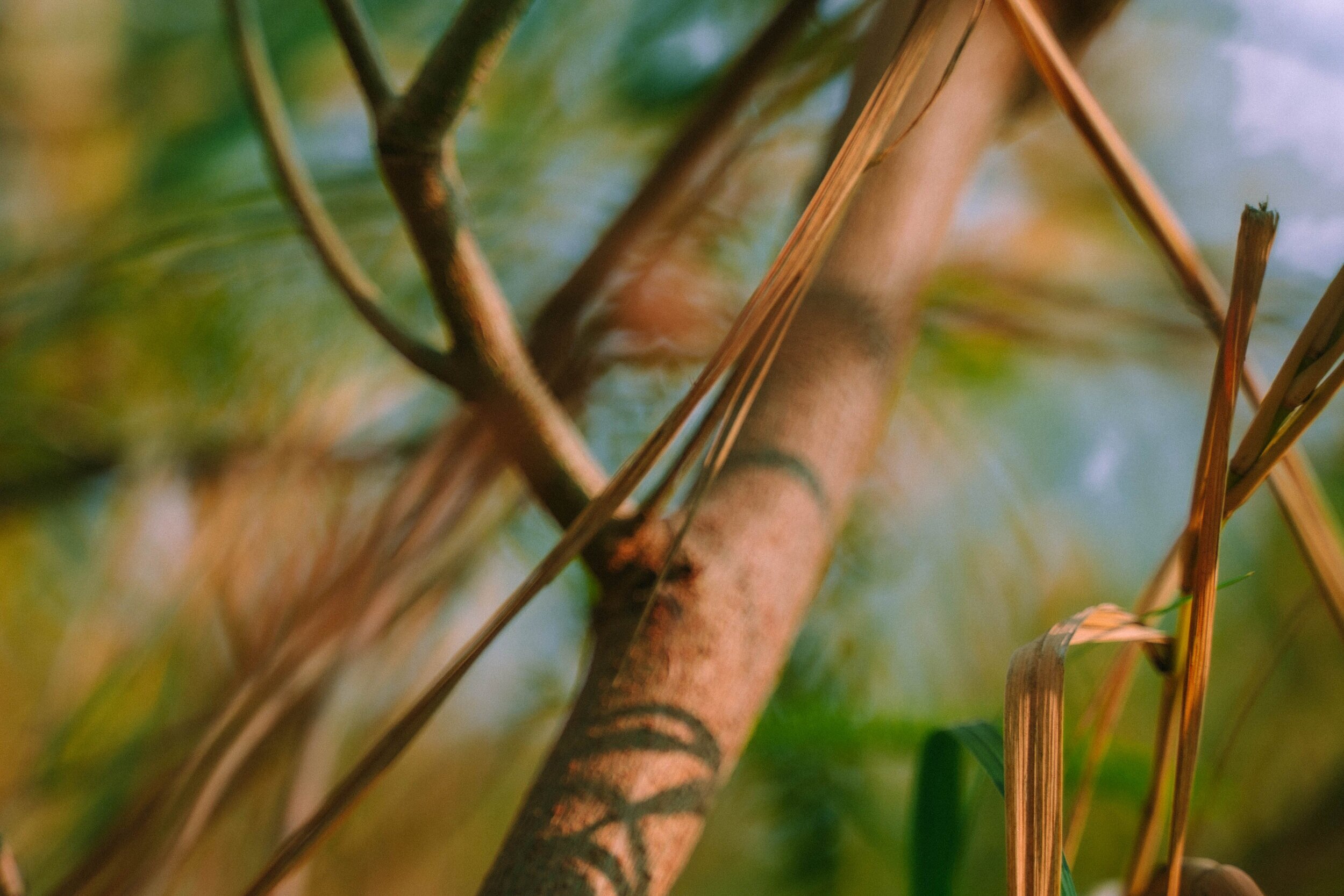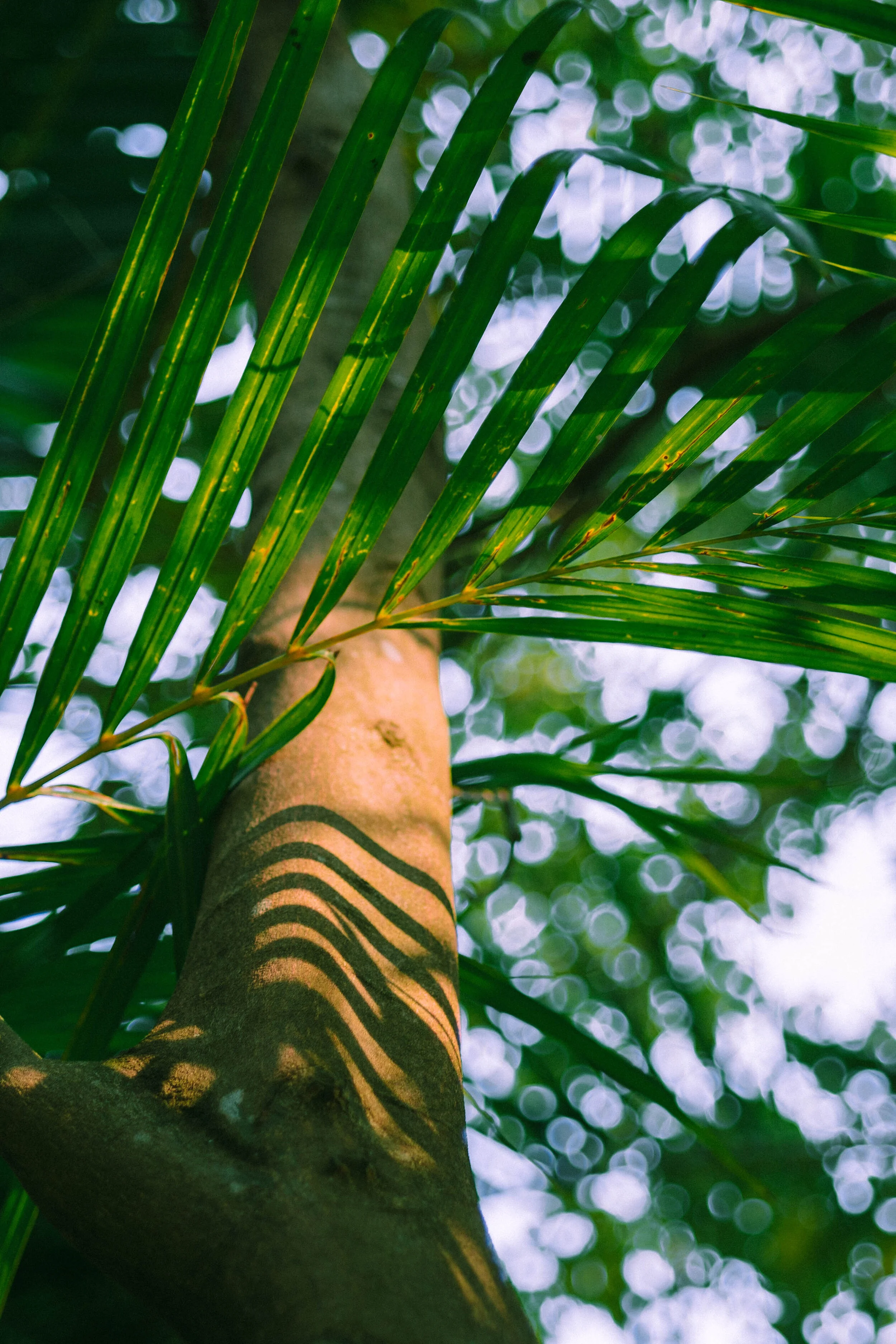The Grammar of Animacy: Reshaping Our Relationship With The Natural World
The distanced relationship between the human and non-human world for many years is manifesting in the form of climate change and environmental consequences. Is this estrangement rooted in our language and if so, how can the grammar of animacy reshape our connection to the natural world?
Illustration by Alicia Hayden.
On World Wildlife Day, the Scientific American published an opinion piece titled, “An Urgent Call for a New Relationship with Nature,” written by Elizabeth Bennett. She begins the piece with a quote from UN Secretary General Antonio Guterres’ speech at Columbia University last December, which said:
“Humanity is waging war on nature. This is suicidal. Nature strikes back -- it is already doing so with growing force and fury.”
Bennett goes on to highlight the dire need to restore the balance in our natural world if we are to defend the inhabitants of the planet, all living beings including plants, animals and of course, ourselves.
Now, this is not exactly news. Regurgitated stories about rising sea levels submerging the pacific island, Kiribati; the last intact ice shelf collapsing in Canada; nothing screams fury more than the first-ever gigafire gouging on the acres of California - and the list goes on. Yet time and time again, this ever-changing reality is met with apathy. Climate disasters are a direct result of anthropogenic provocation through resource extraction, carbon emissions and more. Still, expressed in the form of climate inaction, the prevalent lack of environmental concern is rooted in an implicit divide between humanity and the natural world, as acknowledged by Guterres and Bennett. This human-nature disconnect symbiotically feeds and is fed by the continuous turning of a blindeye to the worsening climate crisis.
To learn more about the recent decrease in human-nature connection, we can look at the cultural production from the last 100 years. In a study conducted by Selin and Pelin Kesebir, the researchers surveyed the use of 186 nature-related vocabulary in 20th century fiction books, films and song lyrics. Each survey came out with the same result; a visibly consistent decline in nature-related English words found within cultural products from the 1950s onwards. Instead of attributing this downward trend to urbanisation, findings show that virtual technologies keeping kids and adults alike, glued to their screens indoors, is the key culprit.
At first glance, the lowering number of nature-related vocabulary use may not seem significant. However, we tend to use language that is most culturally relevant to us. For example, the word “pandemic” was the most used word in 2020 because of the global Covid crisis. What’s more, while the language we use is a product of our cultural context, it also has an influential hand in shaping it and our perceptions too. Kesebir and Kesebir observe that “[t]he flagging cultural attention to nature means a muting of the message that nature is worth paying attention to and talking about.” This means that the less we pay attention to nature culturally, the less likely we will be using the language; the less we use the language, the less likely we will find nature-related elements in our cultural production. The consequence of this negative feedback loop is recognised as shifting baseline syndrome. Dr. EJ Millner Gullard, one of the authors of the phenomenon’s first scientific study, defines it as “a situation in which over time knowledge is lost about the state of the natural world, because people don’t perceive changes that are actually taking place.” As a result, people become increasingly out of touch with the reality of environmental changes and nature gradually moves further away from our cultural consciousness.
...
Illustration by Alicia Hayden.
Based on the study, our collective imagination of nature may look something like this - the constant greenery we see outside our windows, tiny daisies waving at the whim of the breeze, insects and wildlife spotted in our gardens and parks on a mission to find food. Nature as “trees”,“birds”, “leaves”, and so on, occupy the periphery as background objects independent from our conscious, intentional, modernised lives. It’s easy to assume that what nature is, for us living in the global West, is universal. In truth, “the concept of nature is socially-constructed and varies across cultures.” This entails the breadth of what nature includes and the cultural significance of nature as a concept.
In her book Braiding Sweetgrass, ecologist Robin Wall Kimmerer shares the deeply ingrained principles of respect and reciprocity towards the natural world within her indigenous heritage. This is seen not just in the stewardship and traditions of gratitude towards the Earth and its offerings, but also in the language of her people, Potawatomi.
Respect for the living Earth comes in the form of animacy in Potawatomi language. It is an assignment of life and sentience to nouns, things if you will, an attribute that exists in Japanese, Spanish, Arabic and Slavic languages, too. To most English speakers, this is a foreign concept. Flipping through her Christmas gift, a Ojibwe (a close relative of Potawatomi) dictionary, Kimmerer discovers the word “Saturday” - a noun in English - translates to “to be a Saturday'', a verb. Another example, wiikwegamaa, means “to be a bay”.
So what does it mean, to be something?
This was complex, even for Kimmerer. She herself, having grown up as an English speaker, had trouble wrapping her head around the logic of being in relation to a thing. Earlier in the chapter, Kimmerer recalls the first language she knew, “[a]fter the drumbeat of [her] mother’s heart,” was “the shhh of wind in needles, water trickling over rock, nuthatch tapping, chipmunks digging, beech nut, falling, mosquito in [her] ear, and something more”. These are voices of the outside, conversations in which she wished to become fluent by becoming a botanist. Unlike the “language of distance”, “of objects,'' that exist in Western science, there is an understanding in Potawatomi and other indigenous languages that the life around them is indeed alive, with words created to express it as such. Some theorists now describe the life around them as vibrant matter, rather than solely addressing the technical processes.
Photography by Chelsea Lee.
As Kimmerer puts it, “A bay is a noun only if water is dead.”
It took some time and frustration but through studying the wisdom of her ancestors, she finally understood. Kimmerer expresses that “‘To be a bay’ holds the wonder that, for this moment, the living water has decided to shelf itself between these shores, conversing with cedar roots [...]”. Here, the water is figured as an active participant of life, communicative and interactive in its behaviour and being.
70% of the Potawatomi language is made up of verbs. Anything that is not physically man-made, animate or inanimate in the culturally western sense, is expressed as a verb. Whilst in English, objects, plants and tables alike, are addressed as it, indigenous languages reflect the belief that the natural world is alive and providing, using the same language to refer to all non-man made features as they would their family - he, she, they. She argues that in recognising the natural around us as “whos'', we attain a sense of respect and responsibility towards them as we would have towards other humans.
Some people may read about this and misconstrue the grammar of animacy as anthropomorphism. Kimmerer observes this particular discussion between her ecology students. Whilst a couple of students expressed concerns over “project[ing] our perceptions over'' animals, another student refuted it with the response “just because we don’t think of them as humans doesn’t mean they aren’t beings.” The lexicon we use to address the world as Kimmerer suggests, “chart[s] relationships”, and even “reflects our relationships with each other”. The English language, particularly as one that is predominantly categorical and hierarchical, has the limitation when prescribing what something is, also implicitly denoting what something is not. The connotations are subtle, but using it to describe the world outside of the human perspective, attaches a lifelessness and prescribes a hierarchy that sees humans as the most respectable, the most animate - the most alive. The grammar of animacy in the Potawatomi language, however, is rooted in a culture that as Kimmerer continuously expresses, interacts reciprocally with the natural world, acknowledging that the Earth will offer gifts as long as it is respectfully treated with gratitude.
Yet, the destructive force of colonialism has left very few who fluently speak Potawatomi, as little as nine at the time Kimmerer was learning her native tongue. Potawatomi and other indigenous languages perpetuate the message of understanding the Earth and those who live upon it. To be guardians and students of the living, indigenous elders, their ancestors and descendants have been afforded the opportunity to listen to the languages of the world around them. This understanding, if to diminish with its people, will likely bring about a painful silence and further misunderstanding between the human and the non-human.










Learning about the grammar of animacy in Braiding Sweetgrass has been transformative on many levels. For me, in recognising life in the natural world, I am able to acknowledge that these beings love me as much as I love them. Though we may not have grown up viewing the natural world in such light, we should do our best to listen to those who have nurtured and familiarised themselves with the living world for many centuries. We can’t change the entire English language overnight but we can begin with a shift in our mindset. Like the field biologist that Kimmerer mentions, start by addressing animals and insects alike, as “someone” rather than something. You can also replace labels such as “natural processes'' with responses and reactions. These shifts are small but could be central to changing the “currently dominant cultural model of nature” that views humans and nature as mutually exclusive. This idea of nature simply cannot prevail, if we are to survive and restore balance on this planet.
Chelsea Lee
Chelsea is an English Literature graduate from the University of Exeter, currently based in Hong Kong. Her previous projects including a collaborative zine exploring the concept of home and Flagged Up, a radio show on BIPOC experiences, were driven by her curiosity about the stories of others and passion in cultivating a sense of community through amplifying voices that are often overlooked. Chelsea loves hiking and finds floating in the ocean one of the most amazing feelings in the world. Chelsea is our online content director.
You can find more of her work on Instagram @chelseal_eephotos.



